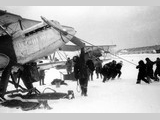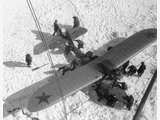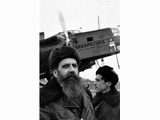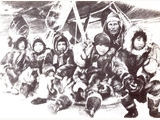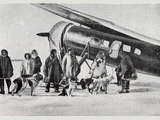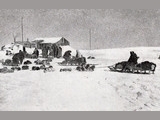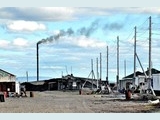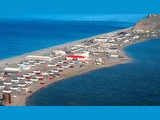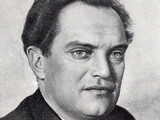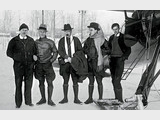Arctic II: Chelyuskin
A The big challenge: conquering the Northeast Passage
Ernst Krenkel will be RAEM
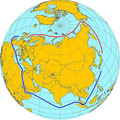
![]() Is it possible to cross the Arctic Ocean by sea in a single navigation period? The Northeast Passage, also Northern Sea Route, (Северный морской путь, abbreviated Sevmorput Севморпуть) is a sea route in the Arctic Ocean along the northern coast of Eurasia, which connects the Atlantic and Pacific. This sea route leads over 3,500 km (comparison: over Europe / Asia 21,000 km) from the European Arctic Ocean through the Barents, Kara, Laptev, East Siberian and Chukchi Seas to the Bering Strait and is the shortest connection from Murmansk or Arkhangelsk. This is a tremendous advantage for merchant shipping and for the economy as a whole. However, the Northeast Passage is seasonal. The time window extends from July to September and, when it comes up, October. Then the merciless polar night breaks. Many attempts have failed so far [20], three of them in the recent past: Adolf Erik Nordenskjöld with the "Vega", 1878/79 [01, 02], Boris Andreyevich Vilkitsky (Борис Андреевич Вилькицкий) with the "Taymyr" (Таймыр) and the "Vaigach" (Вайгач) (1914/15) [03] had to hibernate once, Raoul Amundsen with the "Maud" (1918-1920) even twice. [04]. But two or three years is too long for freight traffic. An unmistakable order comes from the Kremlin: "Our Stalin gave the Soviet polar researchers a clear program: to explore the northern passage and to determine the shortest sea route to the Far East" [05] A new attempt is made based on a resolution by the Arctic Institute of the USSR. And the icebreaker "Sibirjakow" (Сибиряков) with the arctic-proven leader Otto Yulievich Schmidt actually makes it - almost. From July 28, 1932 to March 7, 1833, after 223 days, Murmansk was reached, admittedly with several interruptions that lead to Tokyo, and after a serious accident in tow of the fishing trawler Ussurijez through the entire Bering Strait.
Is it possible to cross the Arctic Ocean by sea in a single navigation period? The Northeast Passage, also Northern Sea Route, (Северный морской путь, abbreviated Sevmorput Севморпуть) is a sea route in the Arctic Ocean along the northern coast of Eurasia, which connects the Atlantic and Pacific. This sea route leads over 3,500 km (comparison: over Europe / Asia 21,000 km) from the European Arctic Ocean through the Barents, Kara, Laptev, East Siberian and Chukchi Seas to the Bering Strait and is the shortest connection from Murmansk or Arkhangelsk. This is a tremendous advantage for merchant shipping and for the economy as a whole. However, the Northeast Passage is seasonal. The time window extends from July to September and, when it comes up, October. Then the merciless polar night breaks. Many attempts have failed so far [20], three of them in the recent past: Adolf Erik Nordenskjöld with the "Vega", 1878/79 [01, 02], Boris Andreyevich Vilkitsky (Борис Андреевич Вилькицкий) with the "Taymyr" (Таймыр) and the "Vaigach" (Вайгач) (1914/15) [03] had to hibernate once, Raoul Amundsen with the "Maud" (1918-1920) even twice. [04]. But two or three years is too long for freight traffic. An unmistakable order comes from the Kremlin: "Our Stalin gave the Soviet polar researchers a clear program: to explore the northern passage and to determine the shortest sea route to the Far East" [05] A new attempt is made based on a resolution by the Arctic Institute of the USSR. And the icebreaker "Sibirjakow" (Сибиряков) with the arctic-proven leader Otto Yulievich Schmidt actually makes it - almost. From July 28, 1932 to March 7, 1833, after 223 days, Murmansk was reached, admittedly with several interruptions that lead to Tokyo, and after a serious accident in tow of the fishing trawler Ussurijez through the entire Bering Strait.
That was the situation when, on December 17, 1932, the Council of People's Commissars of the USSR founded a new institution, the Central Administration for the Northern Sea Route (Главное управление Северного морского пути). Otto Juljewitsch Schmidt becomes its director. He is supposed to travel the same route with a new ship that he had explored on the Sibiryakov.
B Die "Chelyuskin" (Челюскин)
An icebreaker would be indispensable for this passage. But there is none available. So they chose the next best ship, because it should be checked anyway whether the voyage could also be successful with a conventional ship adapted for the pack ice. At the shipyard of Burmeister & Wain (B&W) in Copenhagen, the merchant fleet Sovtorgflot (Совторгфлот) had ordered twenty cargo ships. The first, the Lena (Лена), with hull number 603, was just launched, in early 1933, and assigned the name RAEM to the home port of Vladovostok. "The hull is too weak, the strength of the too few frames does not meet the requirements of an ice-breaking ship, the steamer is too wide, which creates additional problems for impacts against the ice."[ 06] In great hurry the bow and hull are reinforced. On June 19, 1933, the Lena is renamed Chelyuskin, after the polar explorer Semyon Ivanovich Chelyuskin (Семён Иванович Челюскин) (c.1700-1764) and commissioned in June 1933. The ship has a total length of 94.55 m, a width of 16.61 m and a side height of 6.71 m, with 3607 GRT.The steam engine also comes from B&W and drives a fixed propeller.
C Preparations and departure - the journey begins
Leader of the expedition is Otto Juljewitsch Schmidt (ОттоЮльевич Шмидт) [07]. His deputy is Alexej P. Bobrow (А. П. Бобров). The captain is the Arctic-proven Vladimir Ivanovich Voronin (Владимир Иванович Воронин) Most of the team was already at the Sibirjakov . Head radio operator is the tried and tested Ernst Theodorowitsch Krenkel (Эрнст Теодорович Кренкель). Pilot of the amphibious aircraft Schawrow Sch-2 (Бабушкин; Шавров Ш-2) is Michail Sergejewitsch Babuschkin (Михаил Сергеевич Бабушкин;), Also on board are, among others, the painter Fyodor Pavlovich Reshetnikov (Федор Павлович Решетников,) the photographer Pavel Ivanovich Novitsky (Па́вел Ива́нович Нови́цкий), and Cameraman Arkady Shafran (Арка́дий Ме́нделевич Шафра́н) In addition, there is a group of men, women and children on board, relievers for the overwinterers in the station on Wrangel Island. [08, 21]
On July 16, the Chelyuskin leaves the port of Leningrad with great media attention and heads for Copenhagen, heavily overloaded with 8,000 tons of freight, 3,500 tons of coal and 140 people (as well as 26 cows and 4 piglets as living provisions) . Even on this short distance, serious defects in the machine become apparent, which are resolved in a hurry from July 20th to 26th. "We had our first party meeting in the Baltic Sea. About twenty comrades gathered in Comrade Schmidt's four-person cabin. The expedition leader took the floor. ... - We have to prove ourselves in the socialist competition, organize and push work on the ship from day one." [09] ( - July 31: Storm. Waves wash 40 tons of coal from the deck. The route continues around the North Cape to Murmansk, the actual starting point of the passage crossing. Departure is on August 2nd.
D Caught in the ice! The sinking of the Chelyuskin
The main route through the polar sea initially leads through the Kara Sea. Even the first encounter with the ice floes on August 13 shows the ship's weaknesses: bent longitudinal beams, broken frames, burst rivets and a leak. The repair takes three days. The armor only begins below the waterline, the ice floes collide against the less protected flanks. They are considering breaking off the expedition now, but Moscow decides against it. The Chelyuskin carries coal for the icebreaker Krassin (AKA Krasin) (Fig. 05), which is summoned in a hurry and after she has taken over the coal plows through the ice until August 21st., the Chelyuskin follows in the wake. Then she is completely on her own again. Voronin and Babuschkin are doing aerial reconnaissance with the SH-2. Cape Chelyuskin is reached on September 1st. Through the Vilkitsky Narrows, the Chelyuskin changes from the Kara to the Laptev Sea, where she gets caught in a severe storm in which cows in their boxes are injured. In the East Siberian Sea they encounter heavy ice, dents on port and starboard, a frame breaks. The repair is troublesome. (Fig.03) On September 9th and 10th, the ship is damaged again by ice bursts and begins to leak. September 15th to 20th is the latest date to enter the Bering Strait. Not far from Cape Wankarem the ship gets stuck, blasting the ice with explosives does not help. Radio telegrams show that ships are trapped or wrecked everywhere, the Krassin, the Litke, the Sibirjakov, the
13. February 1934
"It was just before 3 p.m., "when I suddenly heard the call from the watchman: 'Comrade captain, an ice rush on port!' A crack running perpendicular to the ship's side wall had hit the ship. The ice slid unstoppably along the crack. Millions of tons rolled up. ... The side wall bulged as if it were made of cardboard. Then I thought I heard machine guns rattle - thousands of rivets popped out. The ship's side was torn open above the waterline to a length of about twenty meters, the inside of the ship turned outwards." The unloading according to the accident plan begins. "The ship did not sink evenly, but in jerks. ... The ice floe had penetrated inside. ... water filled the bow section. The ship became bow-heavy ... and began to sink under the ice, bow first ... the stern rose steeply, ... disappeared under the ice. Cracking, rumbling, fragments flying around. Puffs of steam and smoke. Then it was all over. ... The pressing continued and the site of the accident was covered by the approaching ice." [12] It is 3:30 pm, 155 nautical miles from Cape Severny, 144 miles from Cape Uelen .
01/02 -Caught in the ice
03 - Schmidt and Voronin
04-08, 11 - Emergency unloading of the Chelyuskin
09 - Back side of the RAEM QSL-card: Krenkel running with the transmitter
10 - "The sinking of the steamer 'Chelyuskin', by Fyodor Pavlovich Reshetnikov (Museum: Ministry of Culture of the Russian Federation, Moscow
12 The last picture of the sinking
E The radio station, only link to the world
The radio station becomes the umbilical cord to the world. The polar station of the eastern sector provides reports of the weather and ice conditions four times a day. From the "Extraordinary Triumvirate", the local management of the rescue operation (Petrow, Head of the North Cape polar station; Natauge, Rayon Executive Committee in Uelen; Beloborodow, head of the border guard in Uelen) come the news about the current progress of the measures taken. And when the head radio operator fell ill from exhaustion, Ljudmilla Schrader holds the position in Uelen around the clock i. The radio messages from the camp to Moscow are first handed over by Hapolainen, a Finn, the only radio operator in the North Cape, then in three stages over 2,500 km to the Jugorski Schar station on Novaya Zemlya, where its head Astralzev takes care of the forwarding to Arkhangelsk. Radio telegrams from the camp have priority status with the code designation "Equator".
01/02 - Krenkel rescuing the radio station of the Chelyuskin
03/04 - Setting up the radio tent and the station
05 - Krenkel und Inanov in the radio tent
06 - Krenkel in the readio tent, sketch by Fyodor Pavlovich Reshetnikov
07 - The station log
08 - Ljudmilla Schrader (Людмила Шредер)
09 - Krenkel
10 - Propaganda-QSL card 1937
11 - Cameraman Arkady Shafran (Арка́дий Ме́нделевич Шафра́н)
F The Drift - Camp Smith
The chaos in Camp Schmidt - that is now the official name - quickly gives way to strict order, from the day watch before six o'clock to the evening roll call. 104 people are on the floe. A brigade is formed for each task and housed in a tent collective. The tents are reinforced with tarpaulin walls, the stable galley is built, a bracket is built, a watchtower is erected. This is where the material intended for Wrangel Island is used. The ice pressings continue, all sorts of sinking from the Chelyuskin are washed up, also - to the delight of the carpenters - building materials, once even a completely crushed lifeboat. On the fourth day the first edition of the camp newspaper appears with the leading article: "We are on the ice. But here too we are citizens of the great Soviet Union. Here too we will hold up the banner of the Republic of Soviets, and our state will take care of us. " Schmidt gives lectures on dialectical materialism, German imperialism and the emergence of Italian fascism. The party also has priority on the floe. The Politburo holds its first meeting on February 18. The communists are distributed to all the tents in the camp. [14])
From day one, Soviet propaganda praises the fate of the shipwrecked. The wrong decision to send the expedition with an unsuitable ship is grandiose whitewashed with the description of a great epic Pravda and Iswestja send a daily special news bulletin to the camp. Stalin and Molotov send a radio message: "Offer the heroes of the 'Chelyuskin', our hot Bolshevik greeting. Follow with enthusiasm your heroic struggle against the forces of nature and take all measures to help you. Have a happy ending to your glorious Expedition." [15]
Indeed, hectic activity is beginning in Moscow. The Council of People's Commissars forms a government commission headed by the Deputy Chairman of the Council of Ministers, Valerian Vladimirovich Kuibyshev (Валериан Владимирович Куйбышеev) and Sergei Sergejewitsch Kamenew (Сергей Сергеевич Каменев) and with the leading functionaries of all institutions and state departments concerned. The prominent scientist and polar explorer Georgi Alexejewitsch Uschakow (Георгий Алексеевич Ушаков) 74;) [16] is commissioned to work out proposals for the rescue. The distance to Uelen on the the mainland, is now 265km, an evacuation in foot is out of the question. A relief operation with dog sleds is initiated, but this robs the Chuken tribes of their livelihood. The venture is canceled after a few days. There remains a single, initially inconceivable solution: evacuation by air.
01-04 Camp Schmidt
05-07 - Cracks imn the ice floe
08 - Kdeeping watch around the clock
09 - The watchtower enables a better panoramic view. An army banner is hoisted here on "Red Army Day"
10 -Flames and smoke from oil barrels will hopefully mark the location
11 - Oil barrels
12 - An ice squeeze washes a lifeboat of the Chelyuskin to the surface
13-14 - The route of the Chelyuskin
15 - The drift of the "Camp Schmidt" floe
01 - Ljapidewski landing on March 5th 1934 with a Tupolew ANT-4
02 - The Tupolew ANT-4
03 - Ten women and two children are the first shipwrecked to be evacuated, on March 5th
04 - Shuttle flight of Molokov, Kamamin, Doronin und Wodopanow with the Poliakov P-5
05 - A P-5 is pushed to the runway
06 - Schmidt and Lewanewski
07 - The C-4, a modification for Russia of the Junkers Ju-g1
08/10 -Preparing the C-4 for takeoff
09 - (Plane not yet idenified)
11 - Schmidt at the runway site
12 - Michail Sergejewitsch Babuschkin (Михаил Сергеевич Бабушкин) after landing with the makeshift-repaired Sharov SH-2
13 - Slepnew in Wankarem, boarding sleight-dogs for the camp
14 - Wankarem 1934
15 - Wankarem 2013
16 - Uelen today
17 - Walerian Wladimirowitsch Kuibyschew (Валериан Владимирович Куйбышеev) Head of the Special Committee of the Council of the People's Chamber
18 - March 2, 1934: Ushakow (center) Slepnyov (right) and Levanewski (left) in New York, discussing the flight route to Camp Schmidt
19 - Ladd Army Airfield, Alaska. From left to right: Joe Crosson, Mavriky Slepnyov, Georgy Ushakov, Sigizmund Levanevsky, airfield radio operator
20 - Location map. The international date line runs between the Soviet Union and the USA / Alaska. The distance to the camp is approx. 150km. The distance between Wankarem and Uelen is 120km, that to Nome is 350km

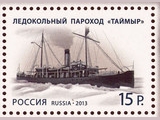
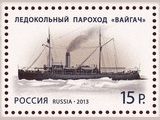



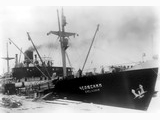

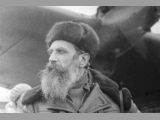
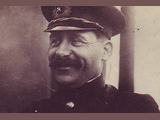

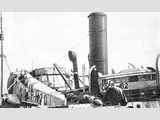
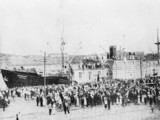
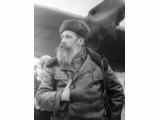
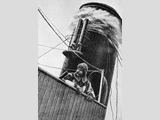
_pthumb.jpg)

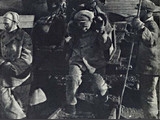

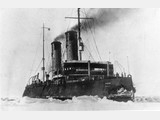

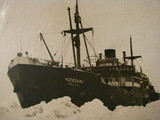
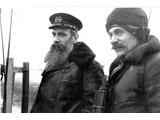
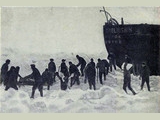
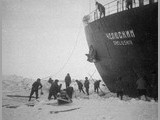
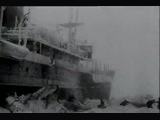

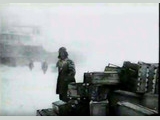

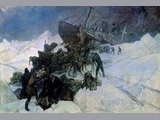


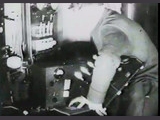
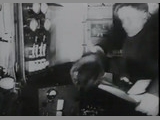
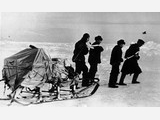

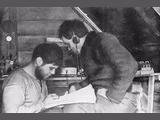
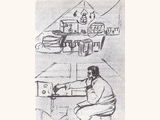
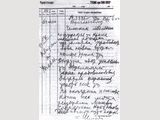
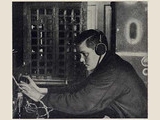
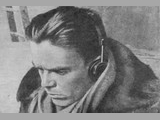


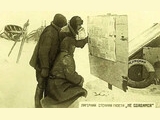
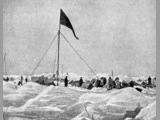
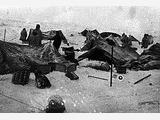



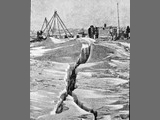

_pthumb.jpg)
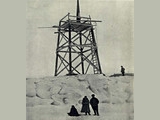


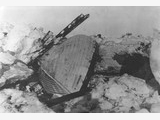

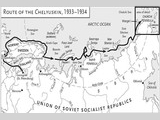

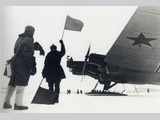
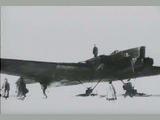
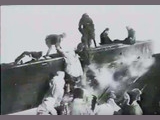
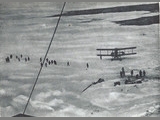
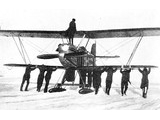

_pthumb.jpg)
